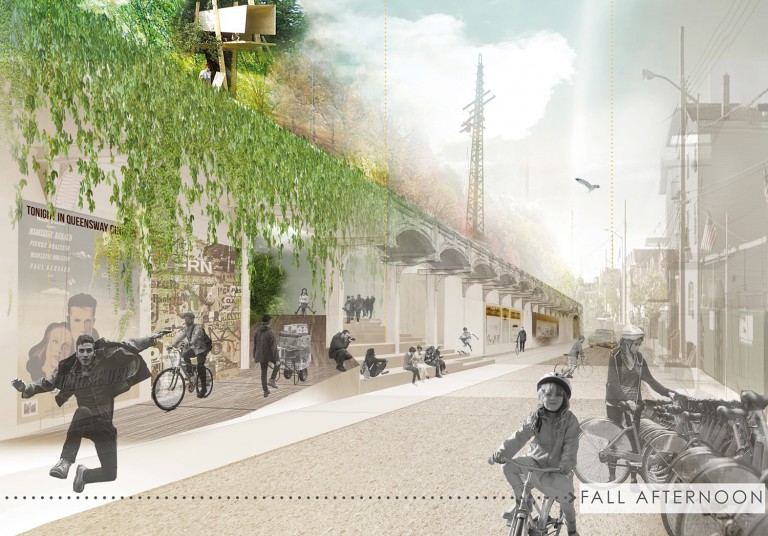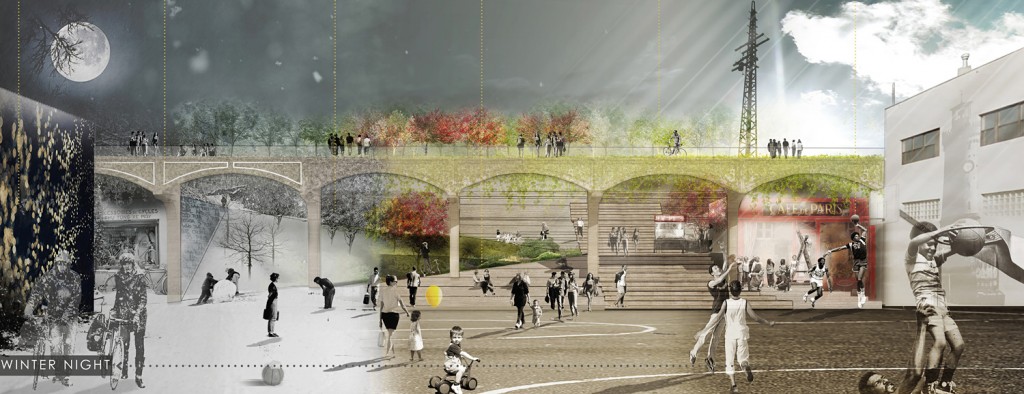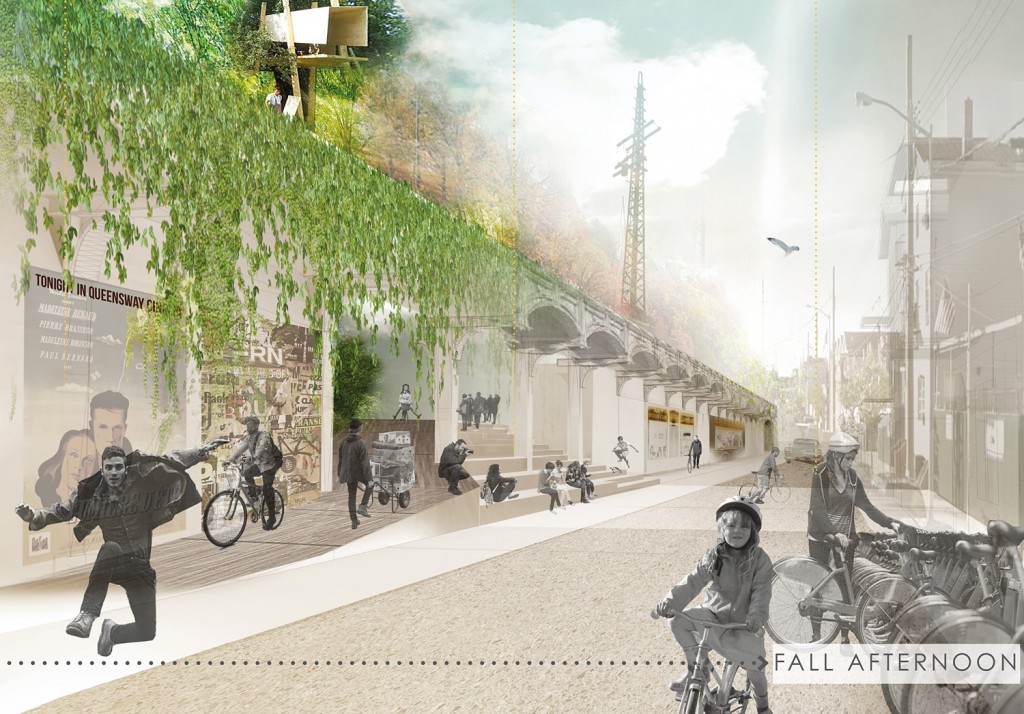
A worldwide architecture competition drew ideas from around the globe as to what the future could hold for an abandoned rail line that runs from Rego Park to Ozone Park, with the winner outlining a proposal that includes exercise space, public art and educational facilities. Images courtesy QueensWay Connection
Queens residents have been grappling over what to do with a 3.5 –mile stretch of abandoned railway running from Rego Park to Ozone Park for years, and a series of more than 100 proposals helped pique their interest thanks to a worldwide architecture competition.
The Emerging New York Architectures committee of the American Institute of Architects New York chapter rolled out its winners of the QueensWay Connection: Elevating the Public Realm contest this week, showing a glimpse into what could become of the abandoned railroad line. The contest accepted ideas from over 28 countries and selected five winners – four of whom won a substantial amount of cash.
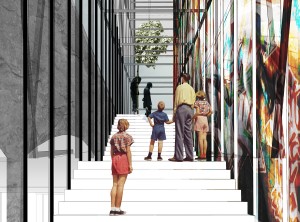
Contest officials said they hoped the competition would help to generate ideas about the possible transformation of the abandoned rail line.
The ENYA prize of $5,000 went to Carrie Wilbert of Paris, France for her QueensWay Steps design. Second place honors and $2,500 went to Nikolay Martynov of Switzerland for the Queens Billboard design, and an additional $1,000 went to third place’s Song Deng of Toronto, Canada for the “Make It Grow It” design and New Mexico’s Jessica Shoemaker, who received the student prize for her Ebb and Flow design. Hyuntek Yoon – the only New
Yorker to receive a prize, was given an honorable mention for his “Upside Down Bridge” design.
Sean Rasmussen, co-chairman of the ENYA committee at the American Institute of Architects, said the contest was about generating ideas and enriching the conversation of what could be at the QueensWay site. Applicants were tasked with the designing an entrance from the street to the elevated Ozone Park station in such a way that was minimally invasive, environmentally sustainable and overall feasible.
“It is about young architects trying to address a certain architectural problem, which is how to create a gracious transition from the street level up to rail level at the site,” he said. “This project was our opportunity to explore that problem and we hope that the ideas generated in all of the entries will help influence the future of the QueensWay development.”
Rasumussen said the committee picked Wilbert’s work because of the subtle sensitivity she used in appropriating an existing parking lot adjacent to the QueensWay to create an urban plaza and place a welcoming staircase next to that plaza. The goal, he said, was to minimize disruption to existing tenants and take advantage of the existing space.
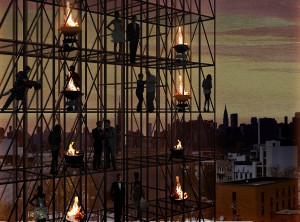
People from around the world submitted applications for possible ways to utilize 3.5 miles of abandoned railroad running from Rego Park to Ozone Park. This design, created by Carrie Wilbert, of Paris, landed first place.
Up until this point, the QueensWay debate has centered largely around local community input, Rasmussen said, and stood a chance to benefit from a more global solicitation of ideas. It was a practice Rasmussen said has become common practice for the ENYA committee, which sets out every two years to pick a spot in
New York City and contribute to the larger discussion that happens within the architectural community.
Some big borough groups have been weighing in over how to utilize the space, including Friends of the QueensWay, which wants to see the site transformed into a borough version of Manhattan’s High Line and applauded the wide crop of architectural submissions in the contest. Other residents, particularly a number in Woodhaven, have been opposed to any development at the site, while others yet want to see the railway reactivated.
“It’s incredible to see inspiration drawn from around the world in conceptualizing innovative ideas that showcase the QueensWay’s potential to revitalize neighborhoods and improve the quality of life,” a spokeswoman for Friends of QueensWay said in a statement. “The Friends of the QueensWay is grateful to everyone who participated in this competition and looks forward to continuing to gather input as we seek to create a one of a kind cultural greenway for the Queens community.”
By Phil Corso

